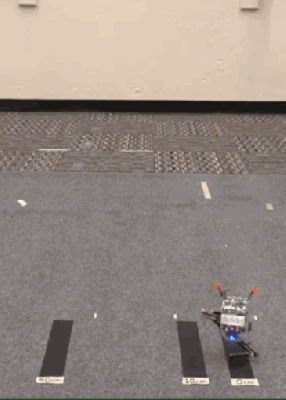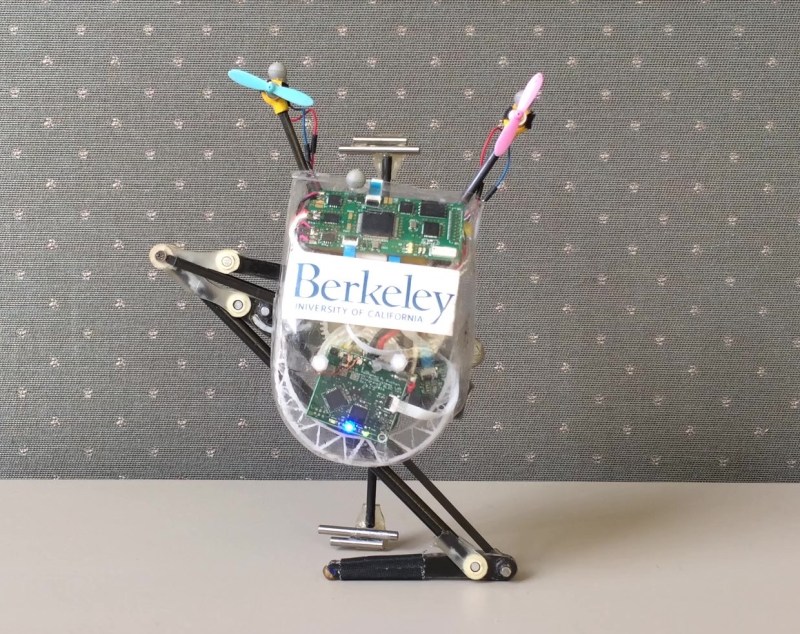Sticking the perfect landing can take years of practice for a human gymnast, and it seems the same is true for little monopedal jumping robots. Salto-1P, an old acquaintance here on Hackaday, always needed to keep jumping to stay upright. With some clever control software improvements, it can now land reliably on an area the size of a coin, and then stay there. (Video after the break)
[Justin Yim] from the UC Berkeley’s Biomimetics Lab has been working on Salto for the past four years, and we’ve covered it twice before. Attitude control is handles by a combination of propeller thrusters for roll and yaw, and a reaction wheel for pitch.While it was already impressive before, it had a predictable landing area about the size of a dinner plate.
The trick to the perfect landing is a combination of landing angle, angular velocity and angular momentum. Salto can only correct for ±2.3° of landing angle error, because it doesn’t have a second foot to catch itself when something goes wrong. Ideally the robot’s angular velocity and momentum should be as close as possible to 0 at takeoff, which gives the reaction wheel maximum control authority in flight, as well as on landing. Basically a well executed takeoff directly influences the chances of a good landing. [Justin] does an excellent job explaining all this and more on the project’s presentation video.
What is the practical application of Salto, you may ask? Search and rescue of course.
Successfully controlling a robot like Salto is all about control theory. If you want to learn more about the field, you can check out some online lectures on the fundamentals, or get your feet wet with self-blancing robots.
Thanks [Qes] for the tip!
















Fantastic news! I mean, sure it’s way more likely that human hunting robots are going to all be gymnastic abilities allowing them to always stick the landing but it’s still cool. I, for one, welcome our gymnastic robot overlords.
You have to think like people who grant this grants:
“How much explosives can we strap to it and how fast it can deliver. Preferably in swarm of 10.000”
Self deploying field of “bouncing betty” mines.
Stop giving them ideas!
or how many hamburger can it deliver per hour jumping into your window :)
You know, you don’t really need that much precision just for the number 10.
It uses external motion capture data to know where it is going and not jump into waste baskets. I think a bunch of double sided tape is a good defense. Or your basic moat, gladiator nets, or hot oil.
Can it do this on its own or does it depend on realtime feedback from an external motion capture system (as the little silver retroreflector spheres on it suggest)?
it relies on an external vision system.
Oh good, evil overlords who rely on central command and control computers for their robot army seem easier to defeat in all the sci-fi movies I’ve watched.
it is explained in this video:
https://youtu.be/ZFGxnF9SqDE
Honestly the one time I want to see a vertically oriented video…
Lol. This could be the only exception.
wow
Finally…..the PIXAR lamp comes to life.